During this strange, cloistered year, I’ve been finishing off a book on Madagascar. With no view and no space, my mind has often wandered back to that island’s gigantic landscapes.
At nearly 1,000 miles long, the island has left me with a rich cache of memories: cactus deserts, long pale beaches, vast cathedral-like limestone formations (tsingys in Malagasy), and forests that plunge from 1,000 metres down to the sea.
But of all these locked-in, lockdown memories, there’s one I keep reliving. The Pangalanes canal isn’t Madagascar’s grandest or wildest landscape, but it’s deliciously strange. Running down the east coast, it’s formed from a series of natural lagoons, which the French started significantly expanding in 1896. Thousands of imported Chinese labourers created a channel eight times the length of the Panama canal. I once met a Chinese-Malagasy in the east coast port of Tamatave whose grandfather was one of these workers.
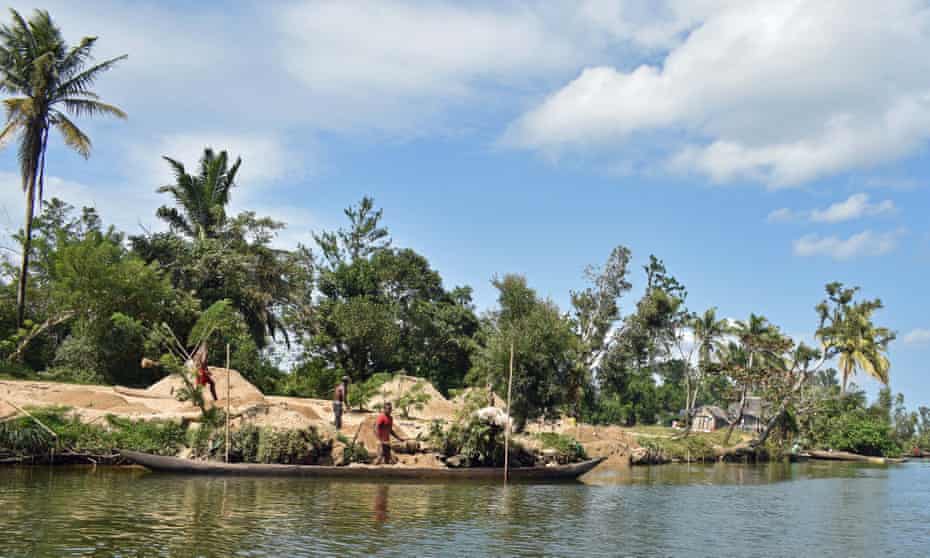
“It kept him busy for life,” he told me. “The canal runs through sand and so, as soon as you’ve dug it, it fills itself in.”
Intrigued, I hired a boatman and a motorised canoe.
I loved the madness of les pangalanes. The canal emerged from Tamatave, and went nowhere in particular. There were no great towns along the way, and nothing much at the other end.
I remember great works of human endeavour: cantilevered bridges, cuttings, berms, and a large basin at the start. There were barges around this basin, like old iron barns scattered on the sand. But mostly I remember the emptiness, the great drifts of orange sand, the little watery forests that closed in around, and the lagoons like molten sky. This is how Venice must have looked before the stone arrived, or the people, or anything at all. Out here, you could scream and scream, and no one would hear you except the eels.
I can only dream of this now, looking out on London brick. This is where I’ll go, I tell myself, when this pandemic’s all over: somewhere big and weird and well out of the reach of wifi and rules.
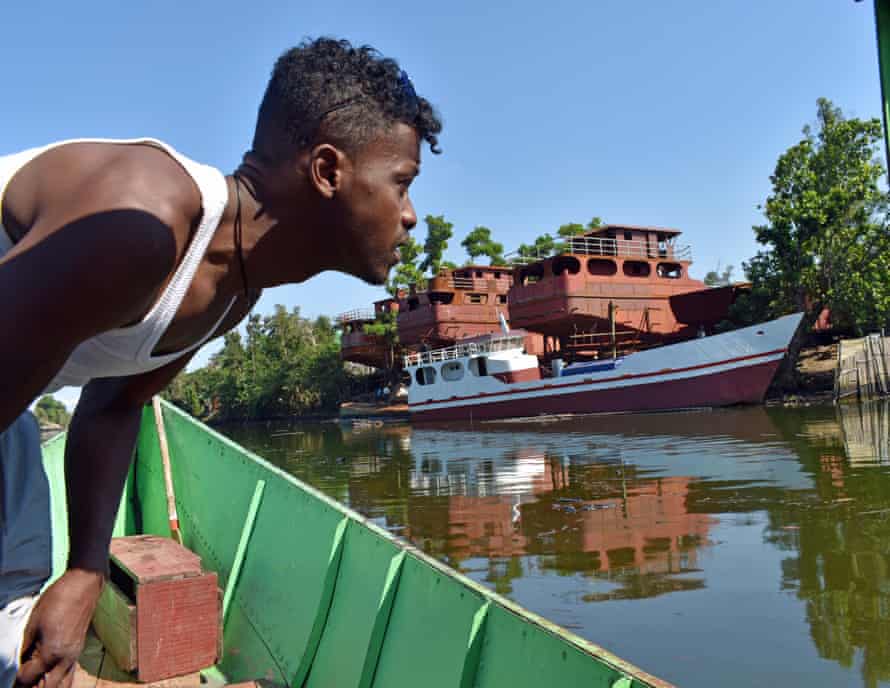
My boatman, Rudolf, wore several crucifixes but didn’t like to talk. All I ever discovered was that he was 24, that he had five children, and that it was dangerous to eat pork out here because it attracted crocodiles. His boat was fast and pencil-shaped, and he’d always sit up on the gunwale, gripping the tiller between his toes. For some reason, his hood had long floppy ears, so that once under way he looked slightly unhinged, like a high-speed rabbit.
Occasionally, we’d pass through an outcrop of rock – a pangalane – and I’d see the marks made by thousands of Chinese chisels. This project was started by the French, soon after their invasion in 1895, and became an obsession. They were still digging deep into the 1950s, and pouring millions of francs into the sand. By the end, they’d gouged out 80km of dirt, creating a channel which – if transposed on to Europe – would have wriggled out of Amsterdam, across Belgium and off to Paris.
By 1957, a 30-ton barge could have got about halfway along, easing itself into the middle of nowhere. But then came independence, and it all silted up. Few public works have ever been quite so demanding, or quite so daft.
Rudolf covered about 60km that morning, before skimming to a halt on Lake Ampitabe. We’d hardly seen anyone out on the water. A handful of little cargo boats, boutres, had wobbled into view, laden with charcoal or wheezing along under a cushion of fish. The French had always hoped this would be a highway of food, sucking in towns and profit.
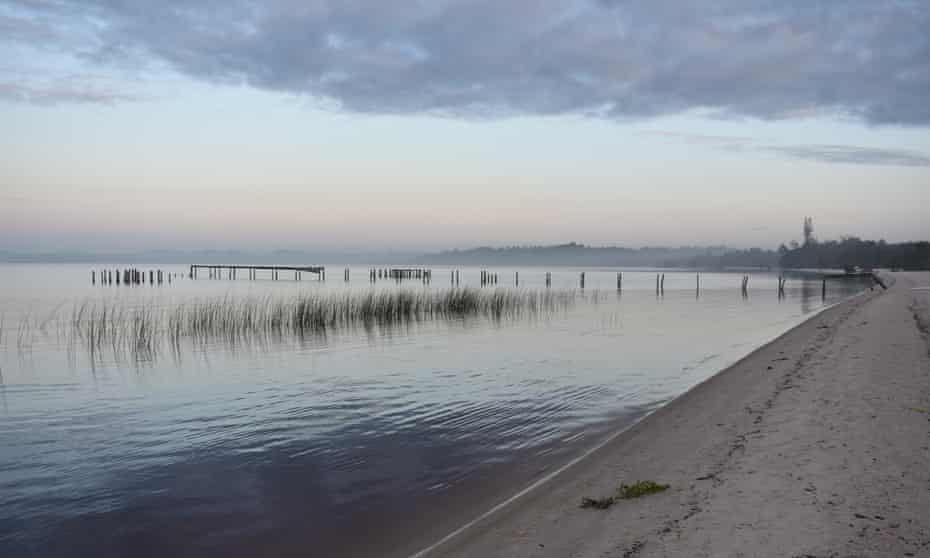
But all we ever saw was the odd string of eels, or a great wet field of fish traps, looking like stitches out in the blue. These days, the birds were back in control: ducks and herons – and kingfishers, flitting around like sparks of blue static. It was impossible not to be charmed, and I was as sure as I could be that, against the roar of the outboard, Rudolf was singing.
There was more life on Ampitabe. From here on south, a long, thin drool of sand ran down the coast, separating the lakes from the Indian Ocean. But within the lagoon there was always an air of expectancy, as if this was a stage, several miles wide and turquoise-grey.
Around its rim, huts and stalls had appeared on a tiny arc of sugar-white sand, and behind us there was nothing but forest and the mountains, now looking smoky and jagged. All day, people here watched the water as if something momentous was about to happen. But there was no sound except the distant murmur of surf.
Rudolf dropped me by a grand old fig tree covered in offerings and the skulls of zebu cattle. He then took one last, spin out through the seagrass before disappearing off into the wings. I wouldn’t see him again until the following day.
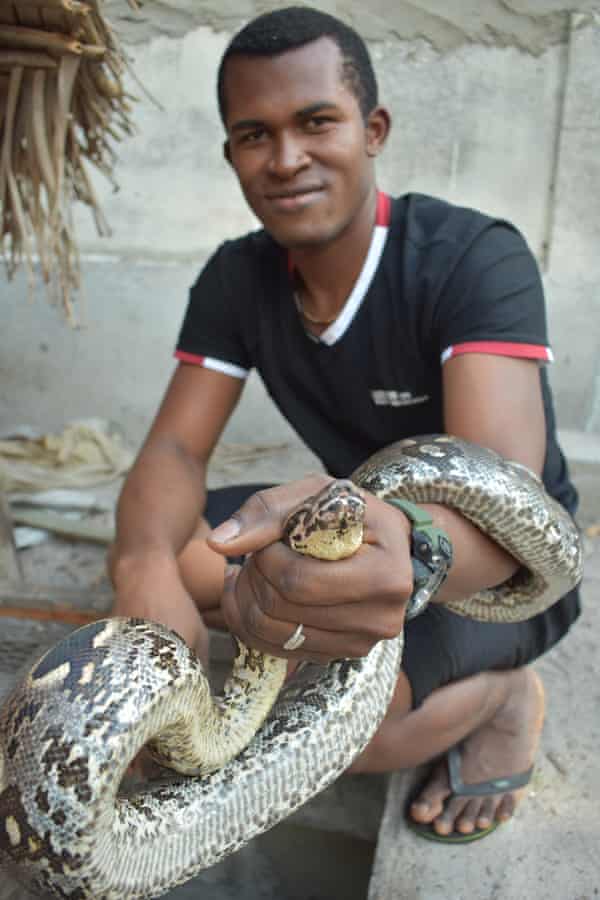
I was to stay in a cabin run by a man called Mobylette, or Moped, who had a keen sense of drama all of his own. Outside his kitchen, there was a pit in which he kept a three-metre-long snake. He also allowed the lemurs to wander out of the forest and over the table, climbing the thatch and swigging sauce out of the bottle.
That night, we sat around watching reruns of Downton Abbey dubbed into French. I don’t think Moped or his family understood any of it, but they did have an old photo of some Downton types. In it, the foreigners are all sporting cork helmets and carrying Winchester rifles, and an enormous crocodile lies at their feet. During the French period, said Moped, this was a favourite place for hunting mamba.
“Oh,” I said, “and what’s it like for swimming now?”
The family laughed. There weren’t many crocs any more.
“And anyway,” said Moped, “they prefer to eat dogs.”
As if les pangalanes weren’t strange enough, there was also a railway alongside it. Sometimes, said Moped, he heard trains twice a week, running along the drool. Of course, it wasn’t like the old days, with four a day. Back then, you could be in Tamatave in a couple of hours, without all this bother. It was a curious thought. Even as the French were busily gouging out their channel, the journey they wanted was already there, mounted on wheels.
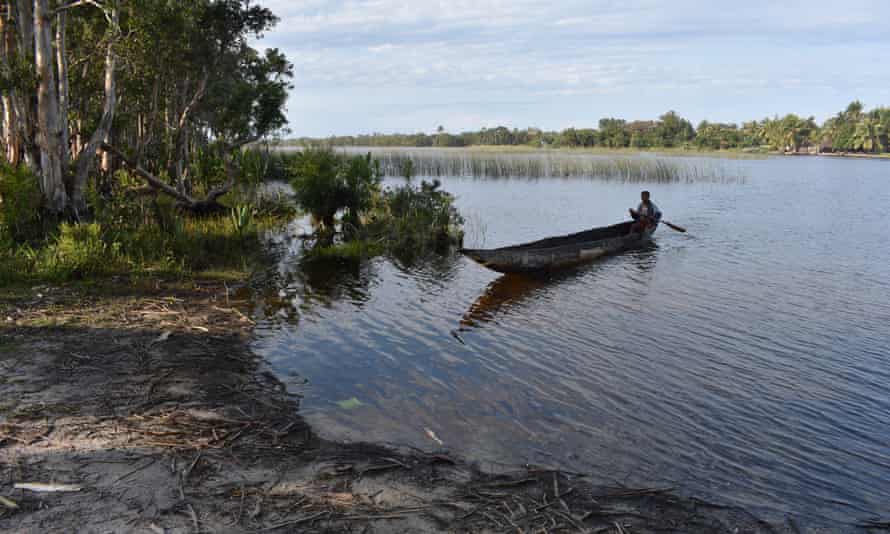
That last morning, I found a dugout and a little old lady to row me across to the railway. She got bolder and bolder as she paddled along, and by the time we arrived her price was £1.
But the railway hadn’t changed, and now looked like a spine running along the sandy ridge. That day, it was covered in laundry, and people picking their teeth and gutting fish.
One of the fishermen offered to show me around his village, Andranokoditra. His name was Leonard, and he had a baby asleep in his arms. Not even the breakers woke her, nor the local disco, nor the girls playing bingo under the palms. Andranokoditra was used to noise. Every February it was blown away in storms, and every March the villagers rebuilt it, with bamboo and leaves.

Only the station was still in ruins. A great storm in 2004 had sucked out the windows and whipped off the roof. All that remained of its glory days was a little sign written in Malagasy, saying, “Please do not urinate in this station.”
That afternoon, Rudolf reappeared and we headed off to our last lagoon.
It didn’t take long to cover the next 15 miles. Rudolf was soon skimming over the seagrass, down the narrows, out through the mangrove and into Lake Rasoabe.
Being near the road, the lagoon had once tempted visitors, and had a tiny resort called Le Manambato. But since the cyclone, there’d been few visitors. Each day began with the women out on the sand scouring their pans. By the afternoon they were brimming with gossip, and would wade into the sea to spread their nets.
But I did at least meet up with my Malagasy-Chinese friend, Alain Daso.
“Come and see my museum,” he said.
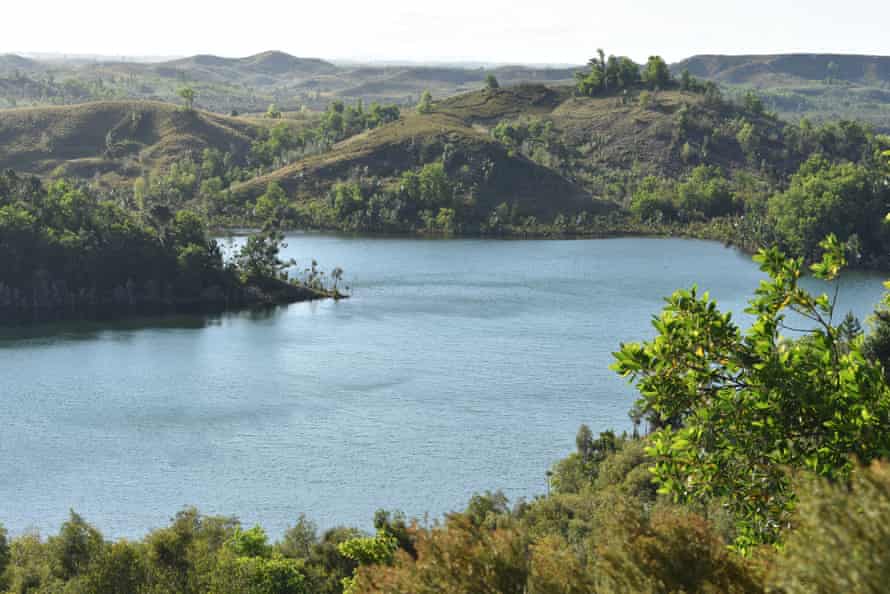
This, it turned out, was an old mansion he had ferried here, plank by plank, from Tamatave – to preserve the Pangalanes story, he said. That afternoon, Alain led me up through the rooms, singing the virtues of all things French. “They weren’t afraid to fail, and that made them great!”
I still wonder about this. France, inadvertently, created a magnificent folly. The canal may never have got its factories and towns but now tourists pay good money to commune with its lemurs and drift its empty lagoons. That will mean a lot to Madagascar in the years to come. So, yes, one cheer for the bold vision of Paris. This waterway would always be either utterly brilliant – the nucleus of economic prosperity – or a home for the herons.
• The boat trip was booked locally with one of the tour agencies on Boulevard Joffre in Tamatave. The three-day trip cost around £200, including boat hire, boatman and two nights B&B in beach cabins
John Gimlette’s book The Gardens of Mars: Madagascar, an Island Story (Head of Zeus, £30), is available for £26.10 inc UK p&p from Guardian Bookshop





